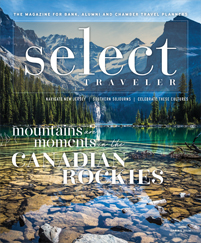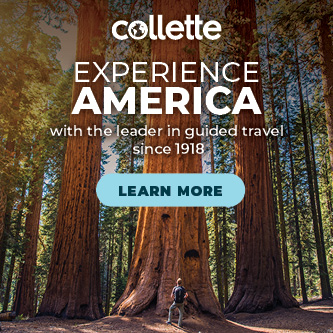International or Domestic Cruises?
When choosing between international and domestic — or mostly domestic — cruises, group leaders need to consider the group’s budget, schedule and season.
Davis likes to start the conversation with the group’s interests and the time of year they’d like to travel because “we have a big variety of cruises that are best done during those times periods,” she said. For example, the Caribbean, Spain and Hawaii are best done in winter; Canada, New England and the Pacific Coast are perfect fall destinations; and Alaska is obviously a seasonal summertime cruise.
Pricing for cruises can also vary dramatically depending on timing. For example, it’s much more expensive to take a European river cruise in September than it is in August, Davis said.
Another consideration is time. Rosenberry works with a group based in the Rocky Mountain region, and it takes those travelers about eight hours to get to an international airport. So the group chose to do two back-to-back river cruises on the Danube and Rhine rivers to make the most of their international travel time and money.
“That extra time — it adds cost and expense for those people,” Rosenberry said.
Domestic cruises are perfect for shorter trips. One of Rosenberry’s most popular domestic cruises is on the Mississippi River between New Orleans and Memphis, Tennessee, on the American Queen, which “might be their [groups’] first best cruise” to allay any fears about passports and language barriers, he said. Islands in the Sun also books the American Empress for Columbia River cruises in the Pacific Northwest and uses American Cruise Line for East Coast cruises that include Cape Cod, Massachusetts, and Charleston, South Carolina.
Cost is one of the biggest differentiators. For domestic cruises, even ones with ports in Canada or other destinations that do require a passport, “the advantage is the flights are not going to be as extreme and maybe not as expensive,” Davis said.
“You have people who don’t have the time or money to do anything long, and then there are the world travelers who are looking for the next best thing, and it’s going to be expensive, and they don’t care,” Davis said.
Budget or Luxury?
When it comes to cruising, as with most travel, there are opposite ends of the spectrum: There are people who have money, and they don’t worry about spending it. They go on the nicest ships and don’t think too much about the price, Davis said. Then there are the people who are really cost conscious. However, “most people fall in the middle,” she said. “It’s so important for the tour operator to understand who their audience is.”
But “at every level, there’s great product and great value to be had,” Davis said.
For example, she had a group that was successful selling Azamara Club Cruises to Italy, typically a more expensive, all-inclusive product; but “a tour operator that has their finger on the pulse of the industry can watch for deals coming out, and tell those groups that this came up, and we found a departure that had a great price on it.”
Higher-end cruise lines offer more luxurious and exclusive experiences, fewer people on board, premium food and an elevated level of service, such as the crew’s learning passengers’ names and cocktail preferences. While that’s “a great experience, not all people would feel comfortable with it,” she said.
At lower pricing levels, there are more people on the ship, and the food is more mass-produced. However, the bigger cruise lines, which tend to be less expensive, offer better entertainment, such as live theater, stage shows, concerts and casinos. Smaller ships will be bringing in smaller acts or local combos.
“Even if you’re paying more, you’re not going to get the amenities they have on the less-expensive cruises,” Davis said.
Value is subjective, and “people have to be able to perceive the value for what you’re charging them,” Rosenberry said.
The value lines have more a la carte options for dining, drinks, services and shore excursions, so passengers can choose what they want. Higher-end premium lines are more inclusive, so people “feel like they get more than what they paid,” he said.
In the end, it comes down to knowing the group and positioning the product to match its expectations.
“It’s all about experience,” Rosenberry said. “Some people will only get up to Alaska but once, and when you send them up there, you want to give them the best trip they can afford.”









